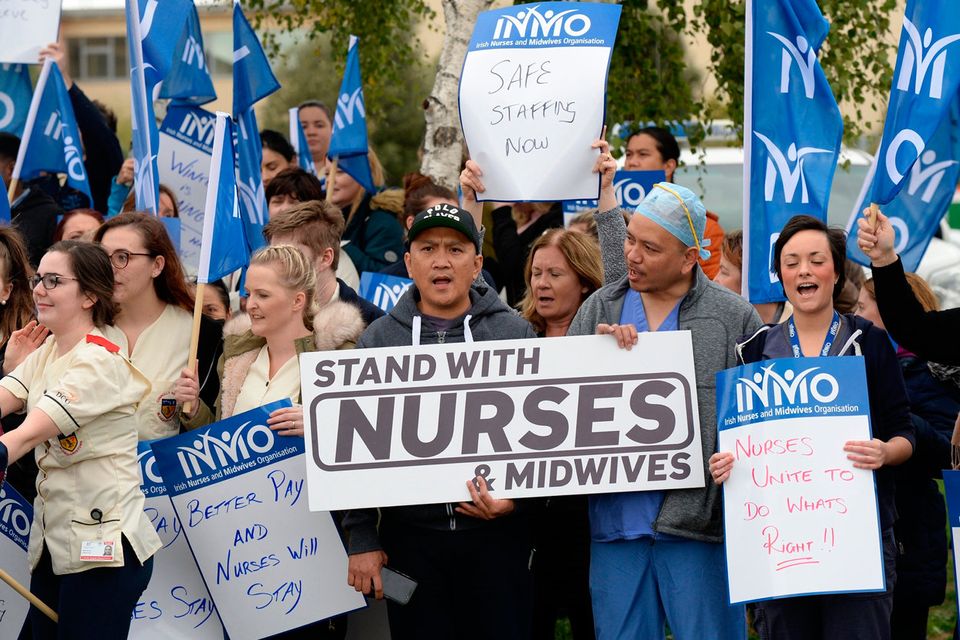Nurses threatening 24-hour strikes as row over pay and lack of staff deepens
Action: INMO members protest over pay in September. Photo: Justin Farrelly
Nurses and midwives have threatened a series of 24-hour strikes unless the Government pushes up their pay.
The Irish Nurses and Midwives Organisation (INMO) has urged its 40,000 members to vote for industrial action in a ballot that ends on December 13.
When asked if the strikes could happen before Christmas, a union spokeswoman declined to say. She said the union's executive council will make a decision based on the outcome of the ballot.
The union is only legally obliged to give the HSE one week's notice of industrial action, although a 'framework' it agreed to resolve disputes means it should give three weeks.
According to the INMO, low pay is making it impossible to recruit and retain enough nurses and midwives and this is putting patient safety at risk and contributing to overcrowding.
The Government has offered a €20m package to nurses in some specialised grades to address recruitment issues, but its advisory body on pay recently found there was no general recruiting crisis among most nurses.
Nurses are already getting pay rises worth around 7pc over the course of the current public sector pay deal up to 2020. However, they want a pay rise for all grades in the region of 12pc on top of these increases to bring their wages in line with professional staff, including physiotherapists.
If they go on strike, the Department of Public Expenditure has warned their pay rises will be delayed by nine months and they will face an increment freeze.
The Finance Minister lashed out at the nurses' pay demand saying it would cost €300m a year and lead to "follow on claims from the rest of the public service workforce, where there are already other known pay grievances".
The INMO said: "Should the vote pass, nurses and midwives will stop work for 24 hours. If unresolved, this will escalate to further 24-hour stoppages."
It said nurses would only provide a minimum of life-saving care and emergency response teams.
Join the Irish Independent WhatsApp channel
Stay up to date with all the latest news















